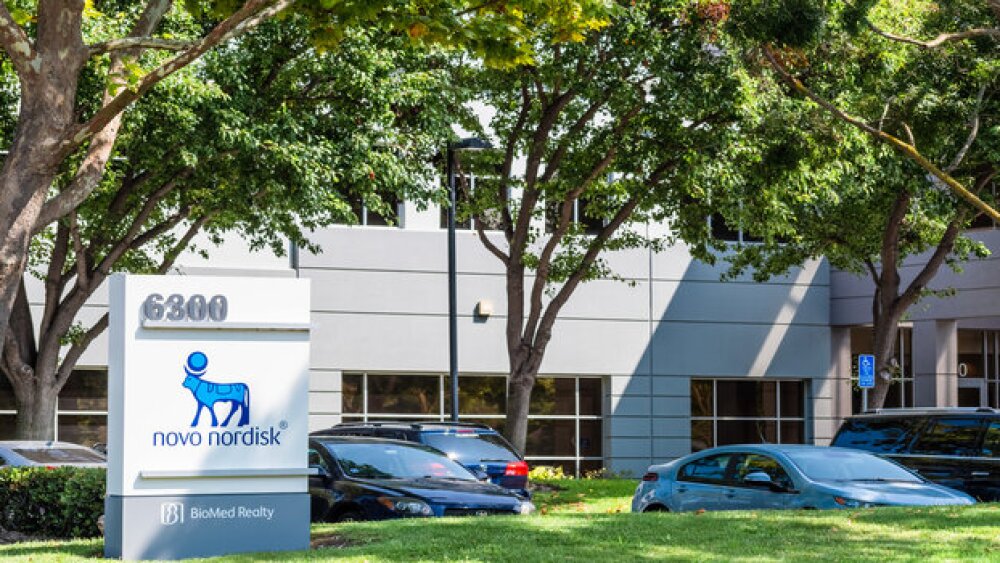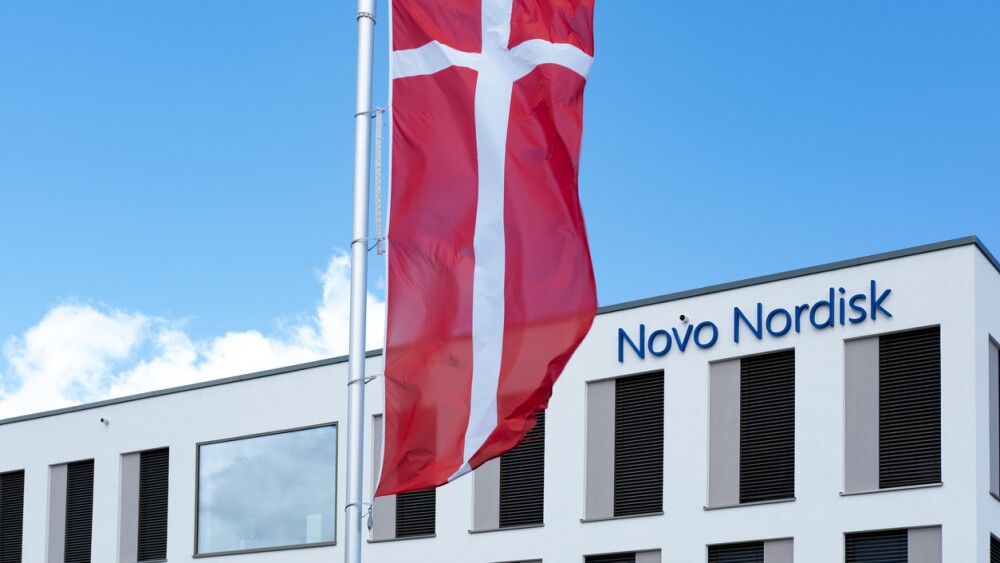Masimo announced the findings of a study in which researchers at Austin Hospital in Melbourne, Australia sought to measure cerebral oxygenation in a large cohort of healthy volunteers, using Masimo O3® Regional Oximetry, to establish a normal range of values and investigate the relationship between cerebral oxygenation and other physical and hemodynamic characteristics.
NEUCHATEL, Switzerland--(BUSINESS WIRE)-- Masimo (NASDAQ: MASI) announced today the findings of a study, recently published in Anaesthesia and Intensive Care, in which researchers at Austin Hospital in Melbourne, Australia sought to measure cerebral oxygenation in a large cohort of healthy volunteers, using Masimo O3® Regional Oximetry, to establish a normal range of values and investigate the relationship between cerebral oxygenation and other physical and hemodynamic characteristics.1 O3 uses near-infrared spectroscopy (NIRS) to monitor cerebral oxygenation in situations in which peripheral pulse oximetry alone may not be fully indicative of the oxygen in the brain.
This press release features multimedia. View the full release here: https://www.businesswire.com/news/home/20190414005060/en/

Masimo Root® with O3® Regional Oximetry and Next Generation SedLine® Brain Function Monitoring (Graphic: Business Wire)
Noting that “normative values for clinical devices are essential to allow for definition of abnormality during clinical use” and that available regional cerebral tissue oxygen saturation (SctO2) reference values have limitations, including not taking into account variables such as brain hemisphere, sex, skin type, height, weight, and others, Dr. Christopher Eyeington and colleagues used Masimo O3 to assess for differences in SctO2 between hemispheres, sex, and comorbidity and smoking status, and for associations between SctO2 and key physical and hemodynamic characteristics, in healthy adults. They enrolled 98 volunteers, 22-60 years old, including 41 males, 22 with one or more co-morbidities, 13 current or former smokers, and with a variety of skin types. Each volunteer was monitored continuously for five minutes using O3 on the Masimo Root® Patient Monitoring and Connectivity Hub, with SctO2 measurements recorded every two seconds.
The researchers recorded 32,130 SctO2 observations. Mean left, right, and combined average SctO2 values were 67.3%, 67.9%, and 67.6%, respectively, with a “narrow” combined average 95% confidence interval of 66.8% to 68.6%. (None of the 95% confidence intervals was lower than 66.5% or greater than 69.1%.) The researchers found “statistically significant yet quantitatively small differences” in SctO2 values according to hemisphere (p < 0.001). They also found that increasing mean arterial pressure (MAP) (p = 0.001) and cardiac index (CI) (p ≤ 0.001) were associated with increased SctO2: each 10 mmHg increase in MAP and 1 L/min/m2 increase in CI was associated with 0.01% and 0.1% increases in SctO2, respectively.
The researchers noted, “Our study implies that in healthy adults the mean SctO2 measured with modern technology is close to 68% with narrow confidence intervals of 1%, and with no difference between hemispheres. Moreover, given a lowest mean combined bi-hemispheric SctO2 value of 56%, it implies that an SctO2 value below 56% should be considered ‘abnormally low.’ In addition, the very few SctO2 values below 60% seen in our study imply that persistent measurements below such a threshold should be viewed with concern. Finally, our observation that SctO2 values were not affected in any clinically significant amount by hemispheres, sex, skin type, comorbidity or smoking status, age or any haemodynamic parameter implies that in healthy adults, cerebral tissue oxygen saturation is unaffected by these factors.” They concluded that “These findings have significant implications regarding the clinical interpretation of SctO2 and the application of this information to individual patients.”
Study co-author Dr. Rinaldo Bellomo commented, “The estimation of cerebral oxygenation by near infrared spectroscopy (NIRS) during anesthesia or in critical illness is becoming increasingly recognized as a desirable form of monitoring. Thus, it is vital for clinicians to understand normal values and to have confidence in the technology behind such measurements. The recent study by my colleagues and myself used >30,000 observations in close to 100 normal subjects and found that the mean normal value for cerebral oxygen estimation using modern Masimo NIRS technology was 67.6%, and, more importantly, that the 95% confidence interval for such value was narrow, between 66.8% and 68.6%. Such findings provide a reference value for patient assessment and give a degree of confidence to clinicians in relation to the validity and robustness of this technology.”
@MasimoInnovates | #Masimo
About Masimo
Masimo (NASDAQ: MASI) is a global leader in innovative noninvasive monitoring technologies. Our mission is to improve patient outcomes and reduce the cost of care. In 1995, the company debuted Masimo SET® Measure-through Motion and Low Perfusion™ pulse oximetry, which has been shown in over 100 independent and objective studies to outperform other pulse oximetry technologies.2 Masimo SET® has also been shown to help clinicians reduce severe retinopathy of prematurity in neonates,3 improve CCHD screening in newborns,4 and, when used for continuous monitoring with Masimo Patient SafetyNet™ in post-surgical wards, reduce rapid response activations and costs.5-7 Masimo SET® is estimated to be used on more than 100 million patients in leading hospitals and other healthcare settings around the world,8 and is the primary pulse oximetry at 9 of the top 10 hospitals listed in the 2018-19 U.S. News and World Report Best Hospitals Honor Roll.9 In 2005, Masimo introduced rainbow® Pulse CO-Oximetry technology, allowing noninvasive and continuous monitoring of blood constituents that previously could only be measured invasively, including total hemoglobin (SpHb®), oxygen content (SpOC™), carboxyhemoglobin (SpCO®), methemoglobin (SpMet®), Pleth Variability Index (PVi®), and more recently, Oxygen Reserve Index (ORi™), in addition to SpO2, pulse rate, and perfusion index (Pi). In 2014, Masimo introduced Root®, an intuitive patient monitoring and connectivity platform with the Masimo Open Connect® (MOC-9®) interface, enabling other companies to augment Root with new features and measurement capabilities. Masimo is also taking an active leadership role in mHealth with products such as the Radius-7® wearable patient monitor, iSpO2® pulse oximeter for smartphones, and the MightySat™ fingertip pulse oximeter. Additional information about Masimo and its products may be found at www.masimo.com. Published clinical studies on Masimo products can be found at http://www.masimo.com/evidence/featured-studies/feature/.
ORi has not received FDA 510(k) clearance and is not available for sale in the United States. The use of the trademark Patient SafetyNet is under license from University HealthSystem Consortium.
References
- Eyeington C, Ancona P, Osawa E, Cutuli S, Eastwood G and Bellomo R. Modern technology-derived normative values for cerebral tissue oxygen saturation in adults. Anaesthesia and Intensive are. 2019. DOI: 10.117.7/0310057X18811962.
- Published clinical studies on pulse oximetry and the benefits of Masimo SET® can be found on our website at http://www.masimo.com. Comparative studies include independent and objective studies which are comprised of abstracts presented at scientific meetings and peer-reviewed journal articles.
- Castillo A et al. Prevention of Retinopathy of Prematurity in Preterm Infants through Changes in Clinical Practice and SpO2 Technology. Acta Paediatr. 2011 Feb;100(2):188-92.
- de-Wahl Granelli A et al. Impact of pulse oximetry screening on the detection of duct dependent congenital heart disease: a Swedish prospective screening study in 39,821 newborns. BMJ. 2009;Jan 8;338.
- Taenzer AH et al. Impact of pulse oximetry surveillance on rescue events and intensive care unit transfers: a before-and-after concurrence study. Anesthesiology. 2010:112(2):282-287.
- Taenzer A et al. Postoperative Monitoring – The Dartmouth Experience. Anesthesia Patient Safety Foundation Newsletter. Spring-Summer 2012.
- McGrath SP et al. Surveillance Monitoring Management for General Care Units: Strategy, Design, and Implementation. The Joint Commission Journal on Quality and Patient Safety. 2016 Jul;42(7):293-302.
- Estimate: Masimo data on file.
- http://health.usnews.com/health-care/best-hospitals/articles/best-hospitals-honor-roll-and-overview.
Forward-Looking Statements
This press release includes forward-looking statements as defined in Section 27A of the Securities Act of 1933 and Section 21E of the Securities Exchange Act of 1934, in connection with the Private Securities Litigation Reform Act of 1995. These forward-looking statements include, among others, statements regarding the potential effectiveness of Masimo O3®. These forward-looking statements are based on current expectations about future events affecting us and are subject to risks and uncertainties, all of which are difficult to predict and many of which are beyond our control and could cause our actual results to differ materially and adversely from those expressed in our forward-looking statements as a result of various risk factors, including, but not limited to: risks related to our assumptions regarding the repeatability of clinical results; risks related to our belief that Masimo’s unique noninvasive measurement technologies, including Masimo O3, contribute to positive clinical outcomes and patient safety; risks related to our belief that Masimo noninvasive medical breakthroughs provide cost-effective solutions and unique advantages; as well as other factors discussed in the “Risk Factors” section of our most recent reports filed with the Securities and Exchange Commission (“SEC”), which may be obtained for free at the SEC’s website at www.sec.gov. Although we believe that the expectations reflected in our forward-looking statements are reasonable, we do not know whether our expectations will prove correct. All forward-looking statements included in this press release are expressly qualified in their entirety by the foregoing cautionary statements. You are cautioned not to place undue reliance on these forward-looking statements, which speak only as of today’s date. We do not undertake any obligation to update, amend or clarify these statements or the “Risk Factors” contained in our most recent reports filed with the SEC, whether as a result of new information, future events or otherwise, except as may be required under the applicable securities laws.
View source version on businesswire.com: https://www.businesswire.com/news/home/20190414005060/en/
Contacts
Masimo
Evan Lamb
949-396-3376
elamb@masimo.com
Source: Masimo







